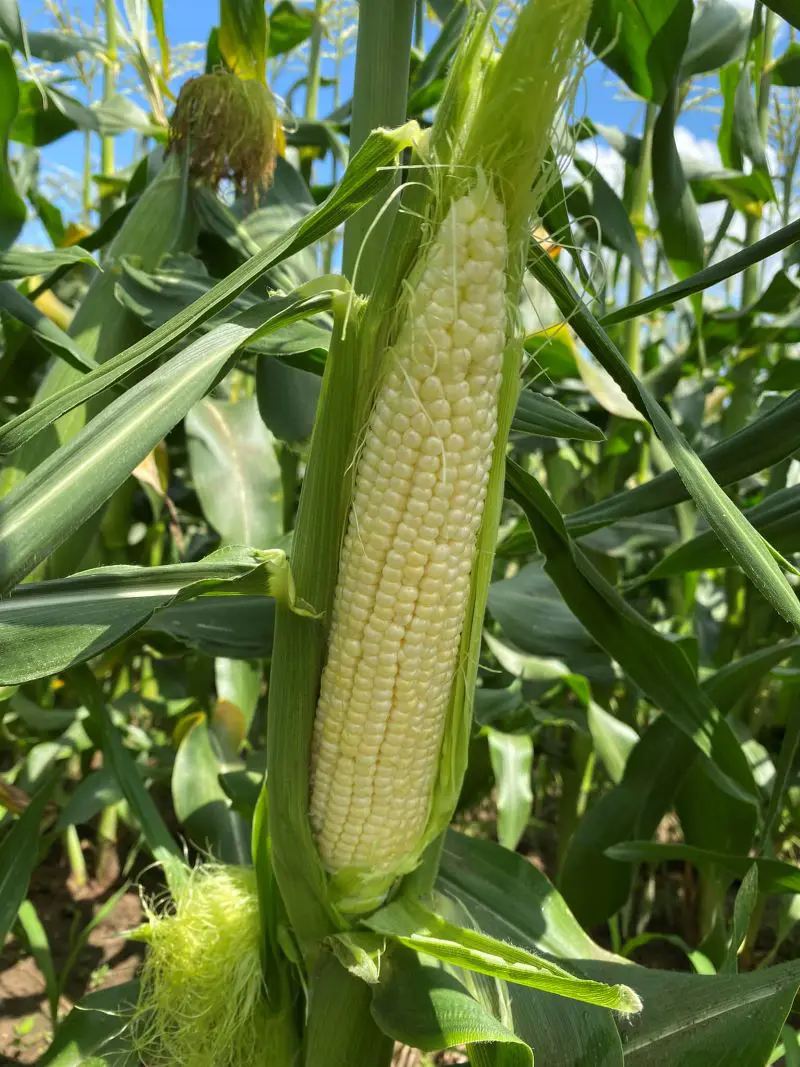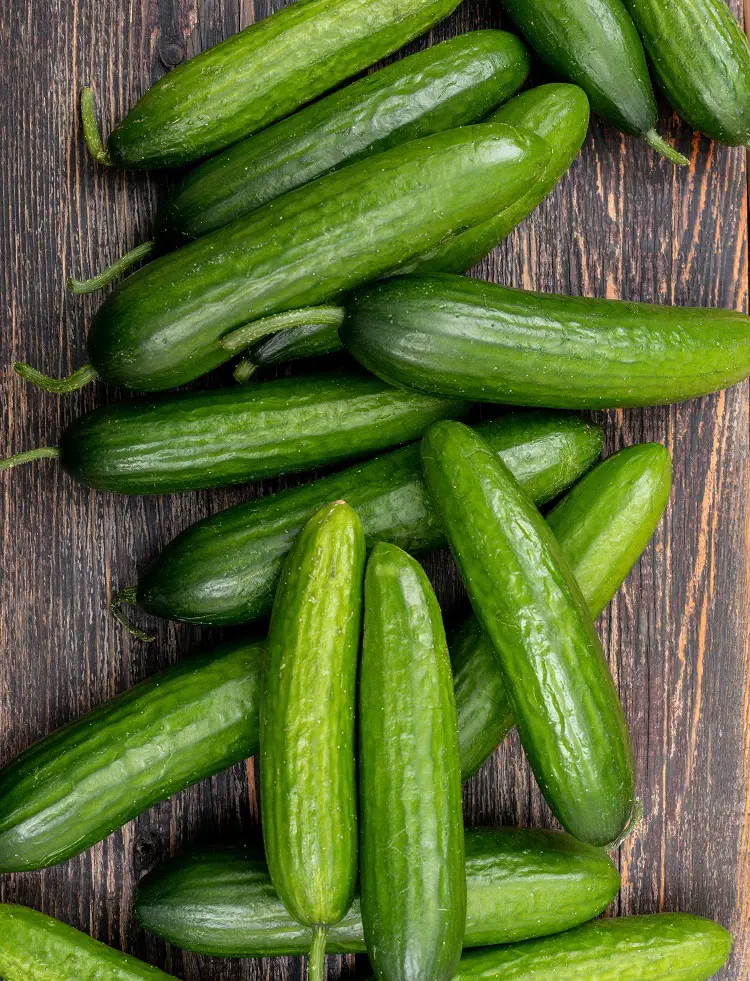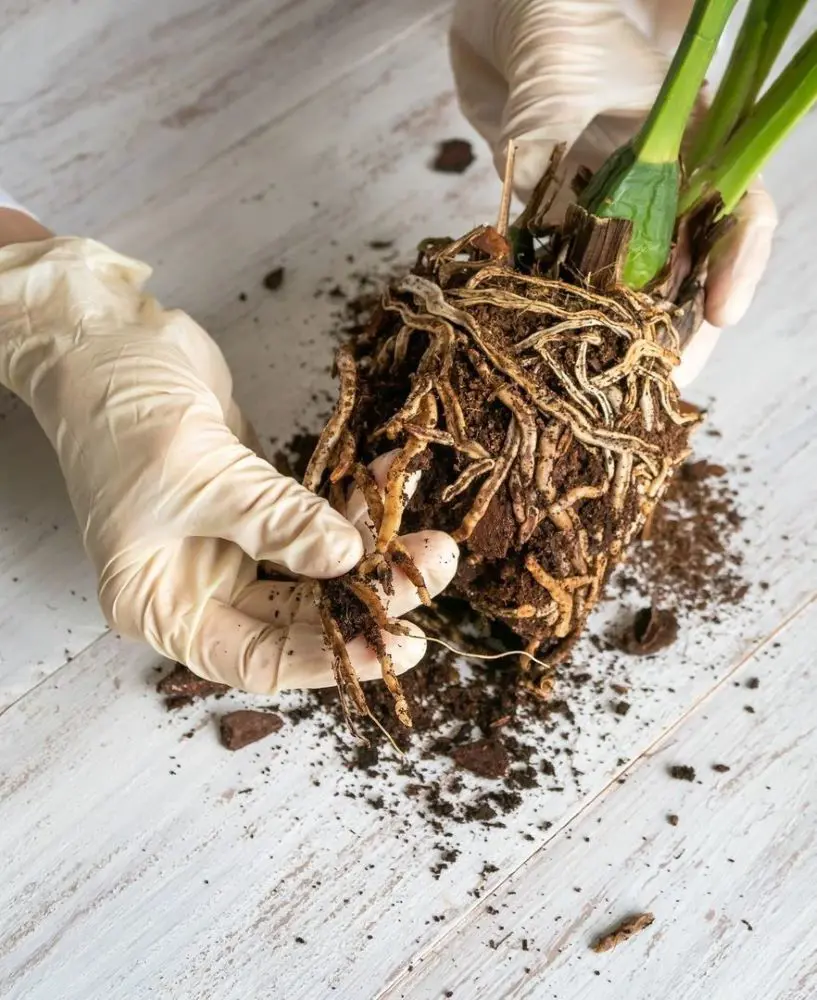How To Grow Sweet Potatoes
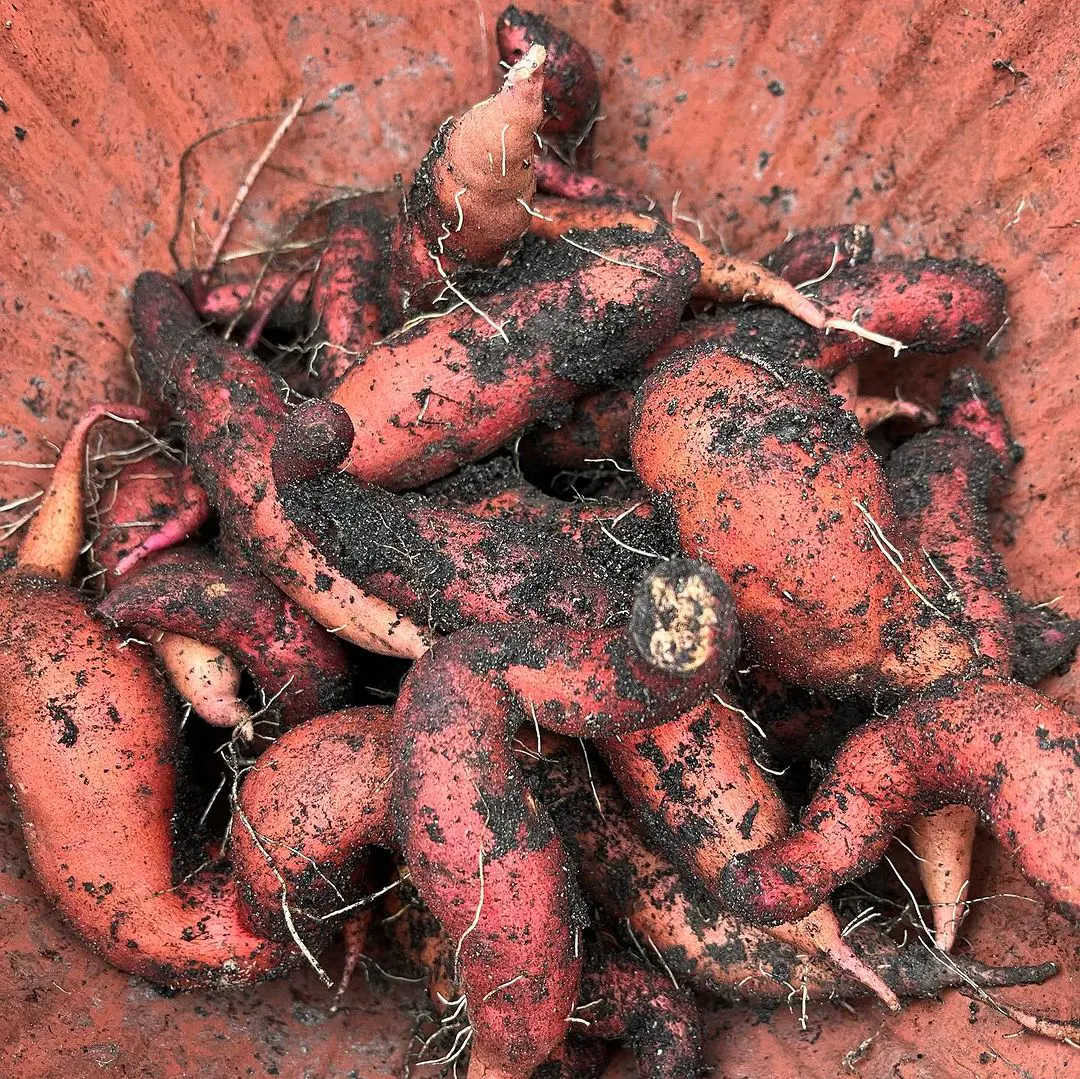
This post may contain affiliate links. If you make a purchase through links on our site, we may earn a commission.
Ever dreamed of growing your own delicious spuds? Well, get ready to dig in, as this guide will turn you from a sweet potato newbie to a harvest hero, taking you through every step, from planting tiny shoots to unearthing sweet success.
So grab your gardening gloves and a good dose of curiosity, and let's dive into the magical world of growing your sweet potatoes, a top-choice summer vegetable.
Sweet Potato Overview
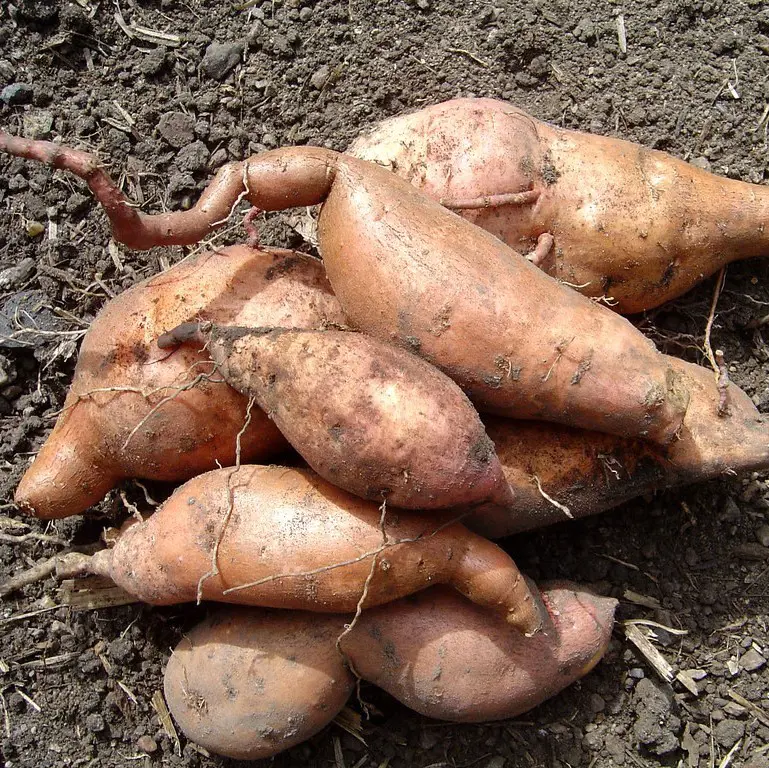
The sweet potato is a delicious and versatile root vegetable native to South America. It's not related to the potato but rather belongs to the morning glory family. You'll recognize it by its elongated, tuberous root that comes in various colors like orange, purple, white, and even yellow.
Here are some of its descriptions:
- Species: Ipomoea batatas
- Family: Convolvulaceae (morning glory family)
- Origin: Tropical Americas
- Type: Root vegetable
- Growth: Vines with edible tubers
- Climate: Warm and sunny
- Taste: Sweet and starchy
- Colors: Orange, yellow, purple, and white
- Nutrients: Vitamin A, C, potassium, fiber
- Methods: Slips or tubers
- Season: Warm weather (after frost)
How To Grow Sweet Potato?

Growing sweet potatoes is a straightforward process that begins with obtaining or creating slips, small sprouts that develop from mature sweet potatoes. There are two key ways to plant sweet potatoes, each with its own advantages and quirks.
1. Growing from slips
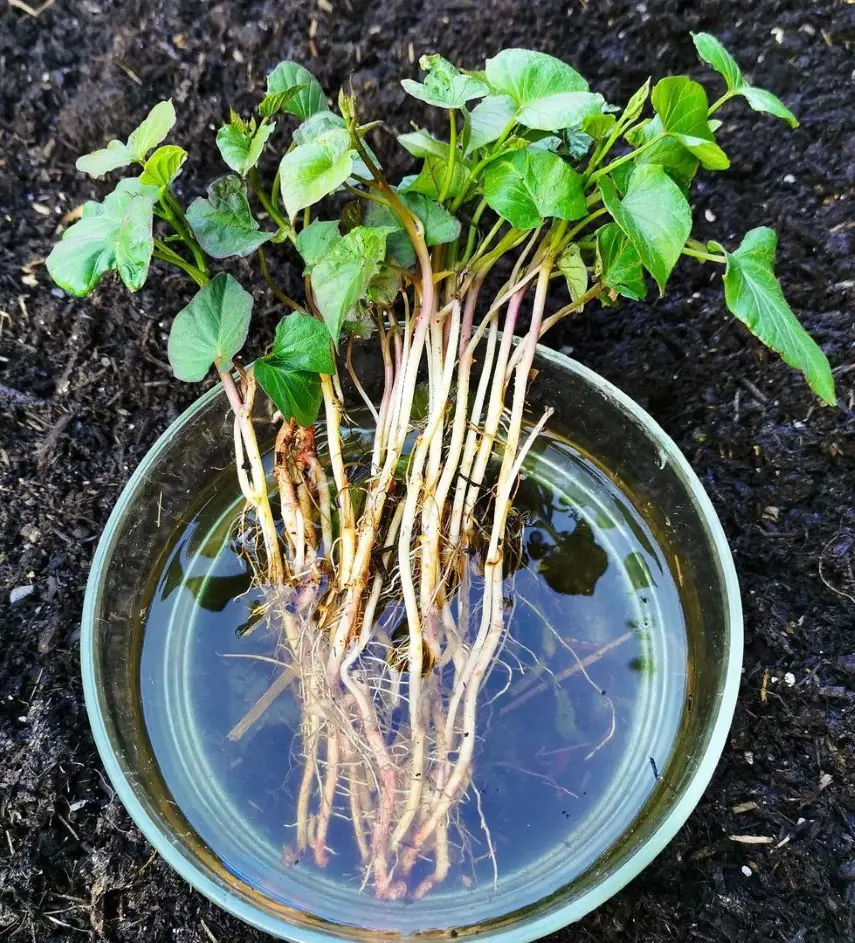
Slips are the leafy shoots that sprout from the top of a sweet potato. You can buy slips at a garden center or start your own from a sweet potato you bought at the grocery store.
Pros:
- Faster growth compared to planting tubers.
- Easier to handle and plant individually.
- There is less chance of introducing rot or disease from the original tuber.
Cons:
- It requires starting slips a few weeks before planting outdoors.
- Finding slips can be tricky, especially in some regions.
How to do it:
- When slips reach about 6 inches, cut them off and plant them in individual pots filled with potting mix.
- Choose a sunny spot with well-drained soil. Amend heavy clay soil with compost or sand. Aim for a soil pH between 5.5 and 6.8.
- Wait until the soil temperature reaches at least 60°F (15°C) and all danger of frost has passed.
- Make holes about 6 inches deep and 12 inches apart, depending on variety. Gently bury the slips up to their top leaves, firming the soil around them. Water well.
2. Growing from tubers
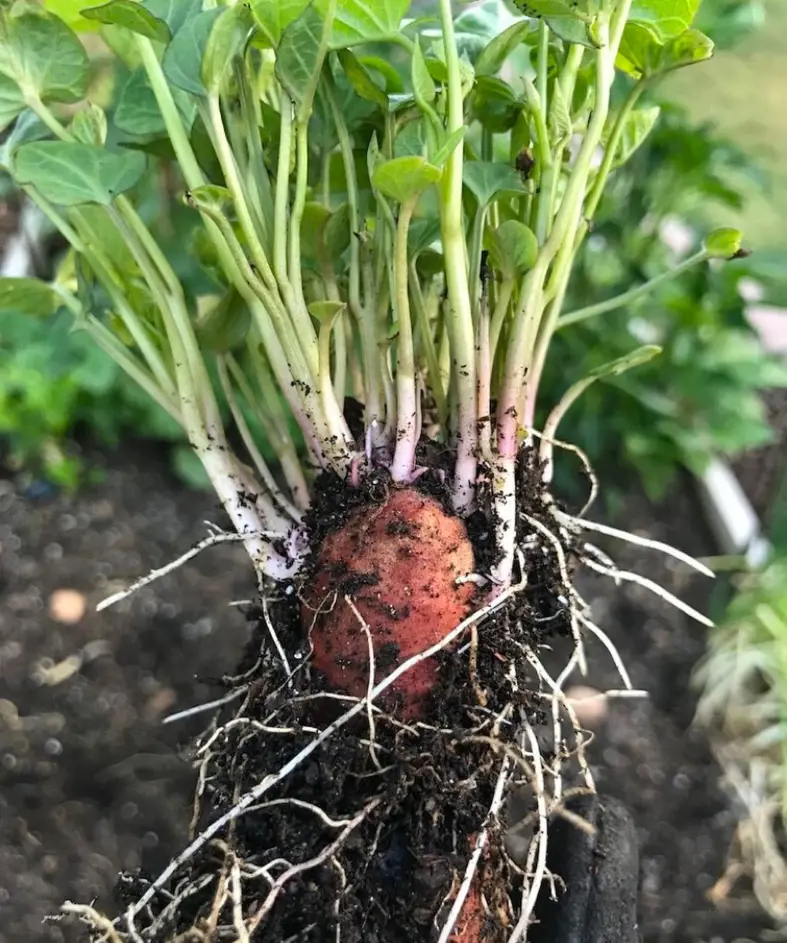
You can also plant whole sweet potatoes at the grocery store. Just make sure to choose a sweet potato that is firm and has no blemishes.
Pros:
- Readily available at grocery stores.
- No need to start slips beforehand.
- More economical than buying slips.
Cons:
- Slower start compared to slips.
- Higher risk of introducing rot or disease from the original tuber.
- Can be bulky and awkward to plant, especially large tubers
How to do it:
- Choose firm, unblemished tubers with no cuts or soft spots. Look for small sprouts, also known as "eyes," which indicate good viability.
- Make 1-2 inch thick slices, ensuring each piece has an "eye." Let the cut pieces cure for a day or two in a warm, dry place before planting.
- Follow the same soil preparation steps as for planting slips.
- Make holes slightly larger than the tuber pieces, about 6 inches deep and 12 inches apart. Place the cured pieces with the eye pointing upwards and cover with soil. Water well.
When To Plant Sweet Potato?
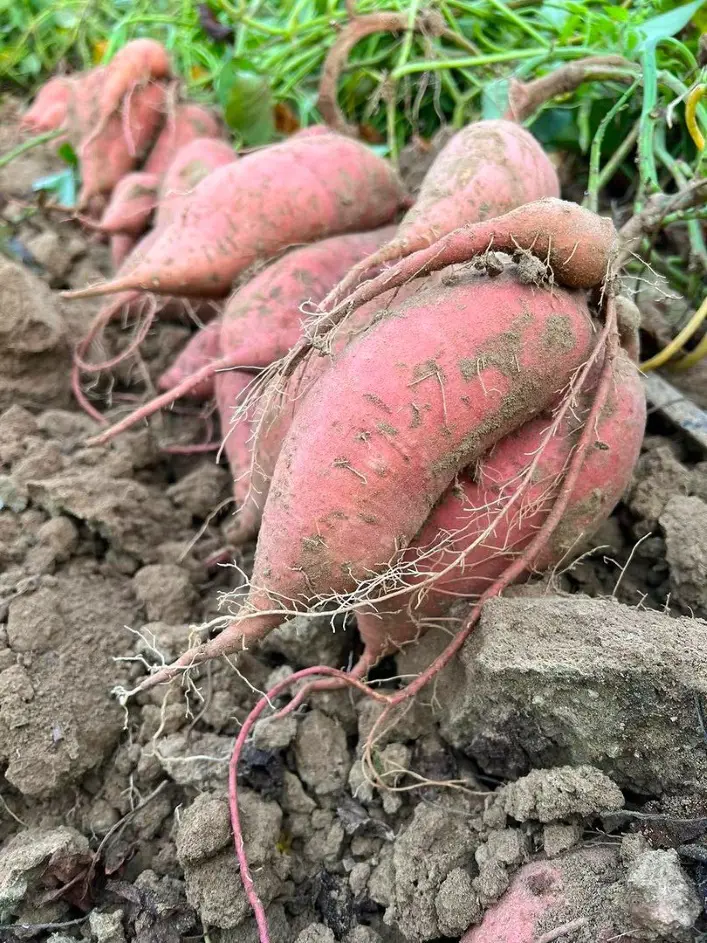
The best time to plant sweet potatoes depends on factors like your climate and the method you choose (slips or tubers).
1. Based on climate:
- Temperate Regions: Plant after the last frost, typically late spring (May–June), when soil temperature reaches at least 60°F (15°C).
- Tropical Regions: Plant year-round in warm soil, ideally with temperatures between 70 and 85°F (21 and 29°C).
2. Based on the planting method:
- Slips: Start slips indoors 4-6 weeks before planting outdoors to give them a head start. This means starting slips in early spring for temperate regions.
- Tubers: You can plant directly outdoors once the soil temperature is warm enough, typically mid-to-late spring in temperate regions.
Additional considerations:
- Rainfall: Avoid planting during heavy rain periods to prevent waterlogging.
- Daylight: Sweet potatoes love sunshine, so aim for long days with at least 6 hours of direct sunlight.
- Variety: Some varieties mature faster than others. Check the specific recommendations for your chosen variety.
How Long Does it Take Sweet Potatoes to Grow?
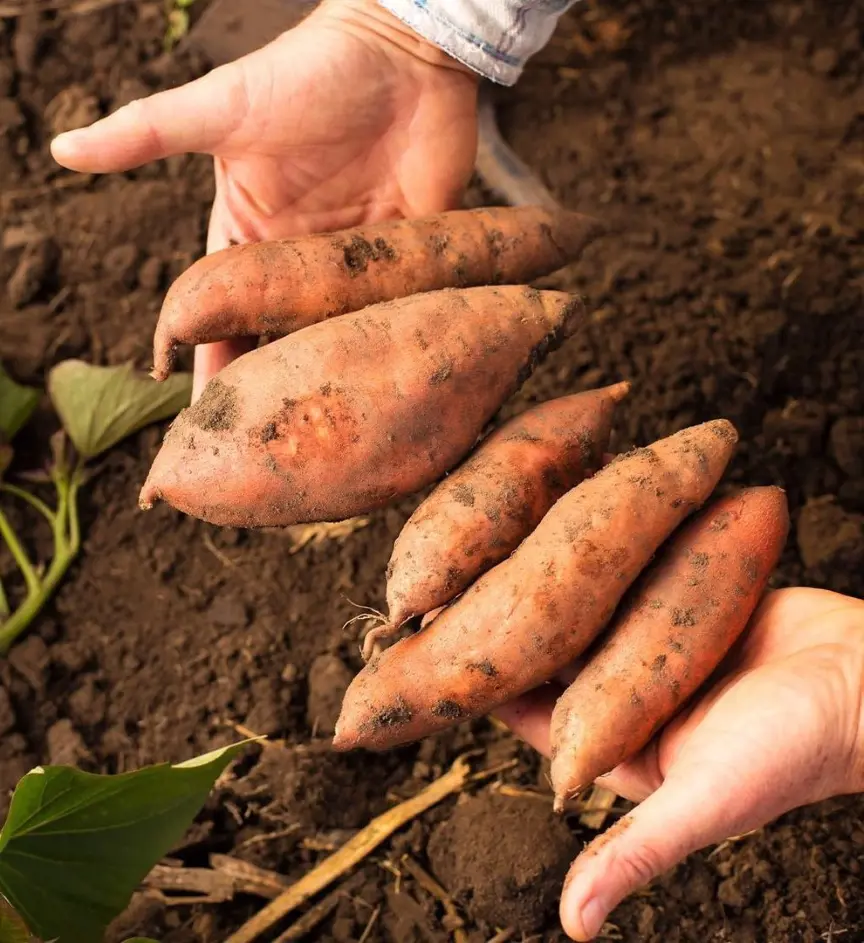
The time it takes for sweet potatoes to grow depends on a few factors, but generally, you can expect to harvest them 85 to 120 days after planting. Here's a breakdown:
Factors affecting growth time:
- Planting method: Starting from slips usually takes a few weeks less than planting tubers.
- Variety: Different varieties mature at slightly different rates. Check the seed packet or information for your specific variety.
- Growing conditions: Warm temperatures, plenty of sunshine, and regular watering will help your sweet potatoes grow faster. Cooler temperatures or stress from drought can slow their growth.
Sweet Potato Care Tricks
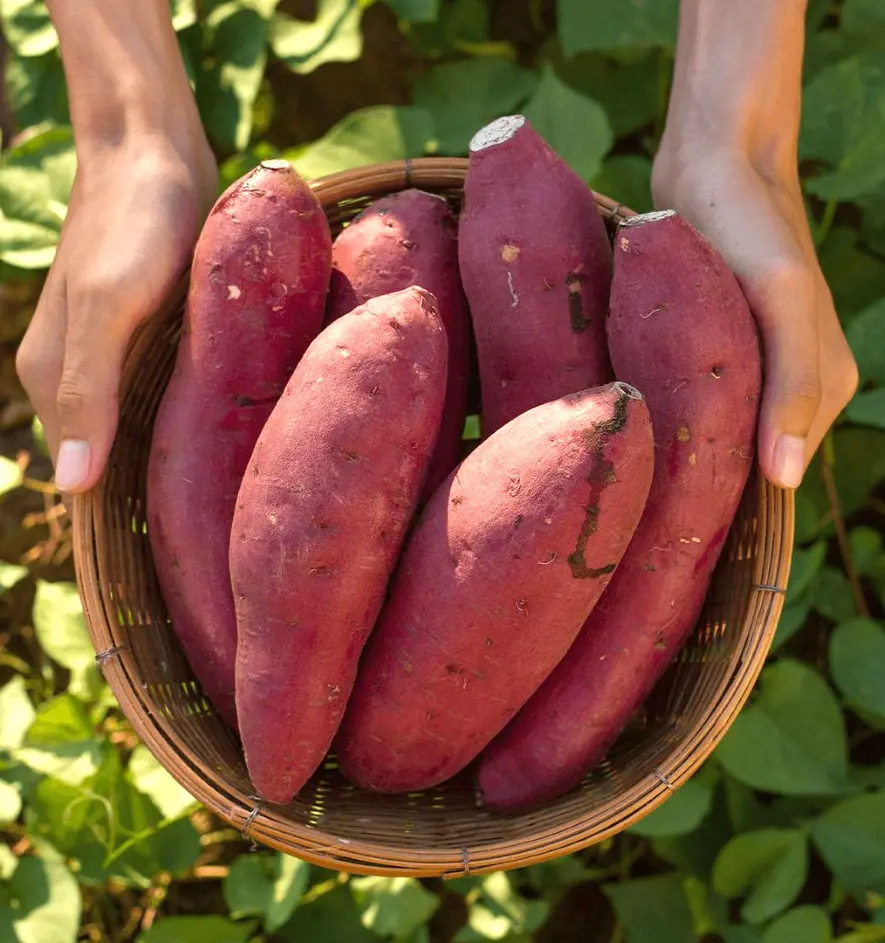
Once your sweet potato sprouts are peeking through the soil, it's time to nurture them into sweet, delicious tubers! Here are some key care tips to ensure a bountiful harvest.
1. Provide Adequate Sunlight
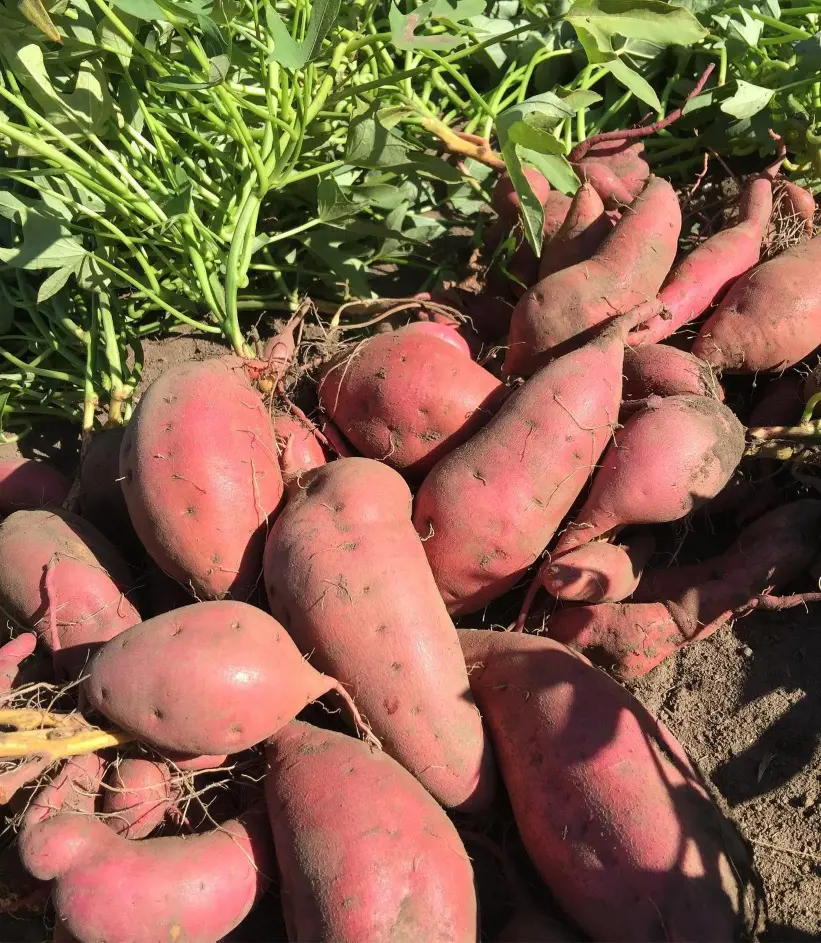
Sweet potatoes are sun-loving plants, thriving in full sunlight. To ensure optimal growth, make sure your sweet potato plants receive a minimum of 6-8 hours of direct sunlight each day.
Placing them in a sunny location promotes robust vine and tuber development.
2. Monitor Soil Moisture
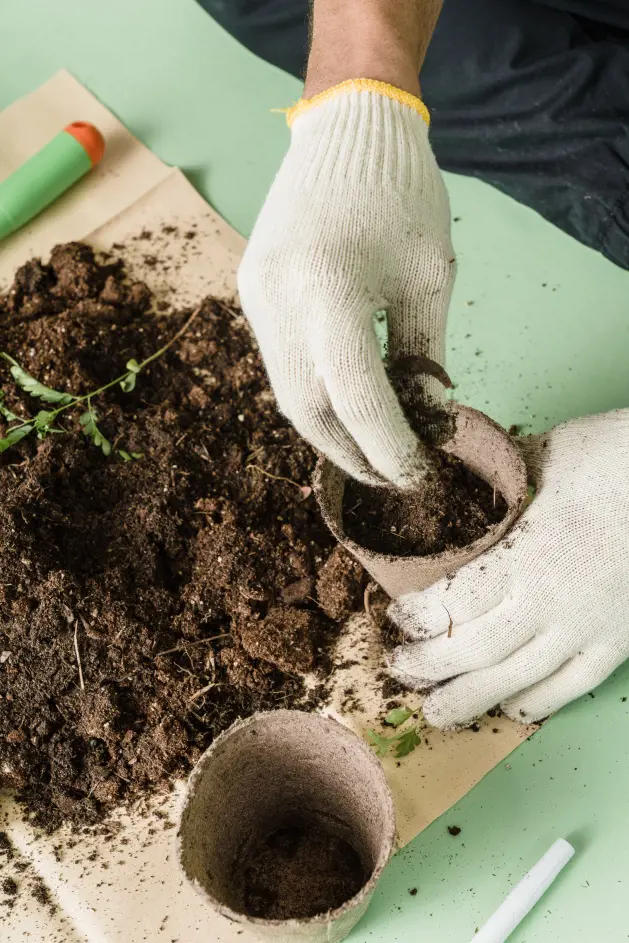
Sweet potatoes require consistent moisture, particularly during the initial growth phases and dry periods. Utilize soaker hoses or drip irrigation to keep the soil evenly moist.
This practice ensures that the plants receive the necessary hydration for optimal tuber formation.
3. Regular Pruning
Periodic pruning is beneficial for these easy-to-pot-grown vegetables. Trim back excess vines to enhance airflow and sunlight penetration.
This practice not only helps in preventing diseases by reducing humidity around the plants but also makes it easier to manage and harvest the sweet potatoes.
4. Proper Spacing
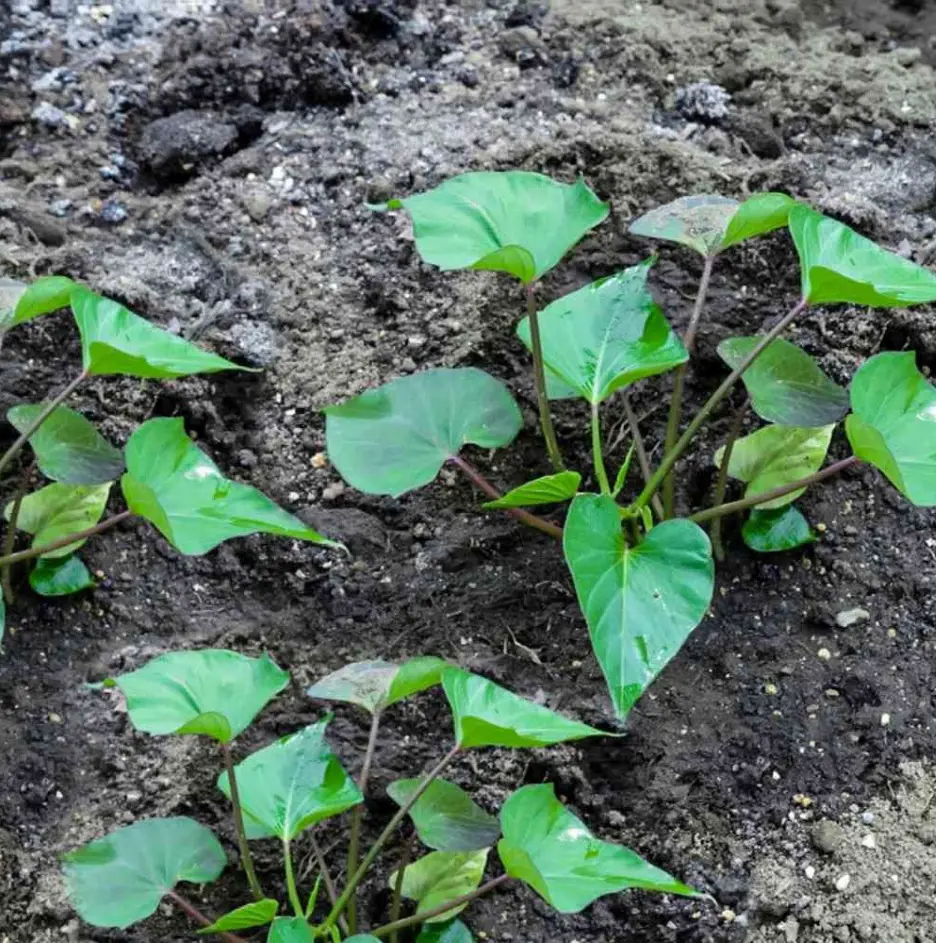
Ensuring proper spacing between sweet potato plants is crucial for their overall health. Adequate spacing allows for better air circulation, reducing the risk of fungal diseases.
It also prevents overcrowding, which can lead to competition for nutrients and hinder tuber development.
5. Mulch Wisely

While mulching is advantageous for conserving moisture and suppressing weeds, it's essential to choose the right type and amount. Avoid heavy organic mulches, especially during the early stages of growth, as they can cool the soil.
Opt for a balanced approach to maintain the warmth required for sweet potato development.
6. Weed Control
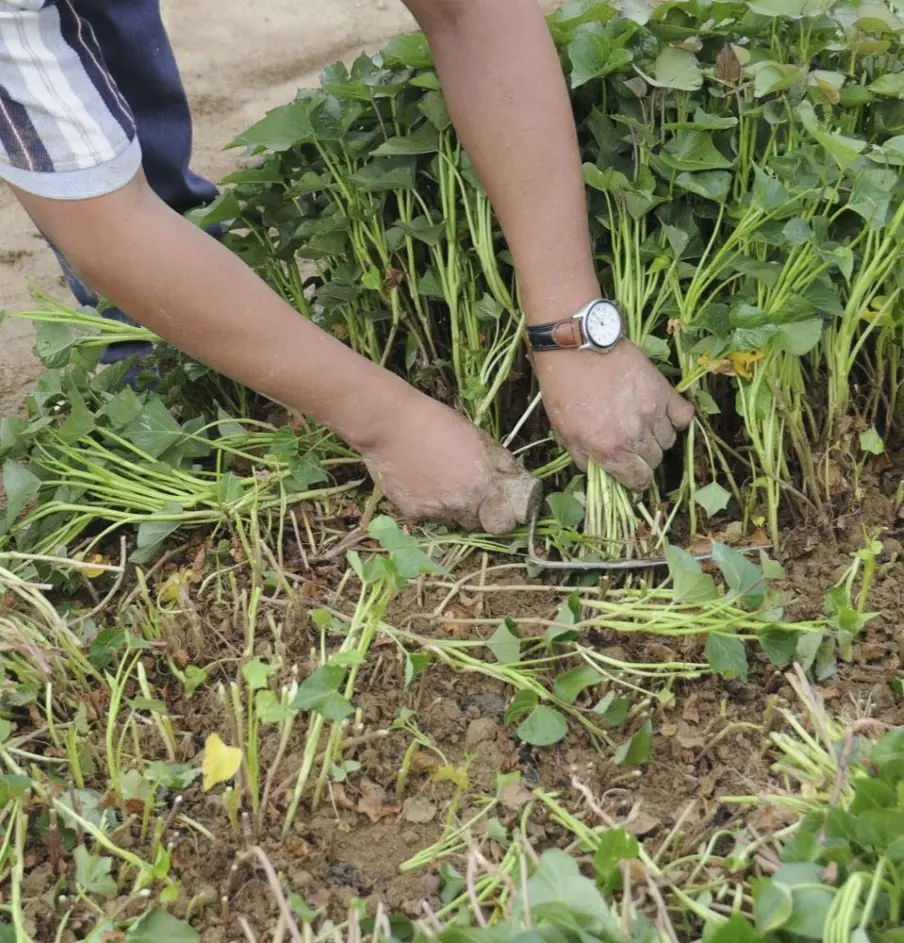
Maintaining a weed-free zone around sweet potato plants is crucial. Weeds compete with sweet potatoes for nutrients and water.
While mulching helps control weeds, regular monitoring and manual removal may still be necessary to create a conducive growing environment.
7. Pest Management
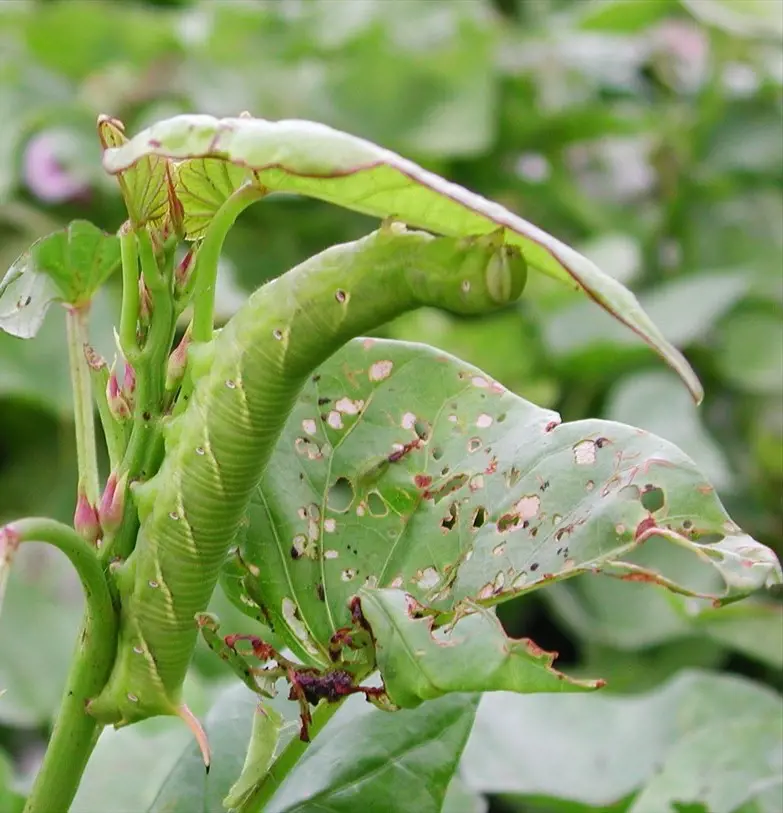
Keep a vigilant eye on potential pests such as aphids, spider mites, and sweet potato weevils.
Employ organic or chemical controls as needed, and inspect plants regularly to detect and address pest issues early on.
How To Harvest Sweet Potatoes?

Harvesting sweet potatoes is like unearthing buried treasure, but with a few extra steps for the best results! Here's how to do it right:
Timing is Key
- Wait for the vine signals: Watch for your sweet potato vines to start yellowing and dying back. This usually happens around 85–120 days after planting, depending on the variety and your climate.
- Weather matters: Avoid harvesting in freezing temperatures or heavy rain. Choose a dry, mild day to ensure smooth digging and prevent damage to your potatoes.
Gentle Digging
- Loosen the soil: Start by gently loosening the soil around the base of the plant with a garden fork or spade. Go about 18 inches around and 6–8 inches deep, as sweet potato roots can spread far.
- Follow the vines: Use the vines as a guide to locate the clusters of potatoes. Carefully trace their path underground with your hand or a trowel.
- Lift with care: Once you locate a potato, gently pull it out of the soil. Don't yank or twist, as this can bruise or damage the delicate skin.
Post-Harvest Steps
- Brush off dirt: Gently brush off any loose dirt with your hands or a soft brush. Do not wash them!
- Handle with care: Avoid dropping or bumping your sweet potatoes. Bruises can affect their storage and quality.
- Curing is crucial: After harvest, lay your sweet potatoes in a warm, well-ventilated place (around 80–85°F and 80–85% humidity) for 7–10 days.
How To Store Sweet Potatoes?

After all the effort put into growing those delicious sweet potatoes, storing them properly is key to enjoying their sweetness for as long as possible! Here are some tips for different storage scenarios:
Short-Term Storage (1-2 weeks)
- Cool and dry: Find a dark, well-ventilated spot with a temperature between 50 and 60°F (10 and 15°C). A pantry, basement, or garage are good options.
- Skip the fridge: Cold temperatures can alter the sweetness and texture of sweet potatoes.
- Don't wash them. Washing can encourage spoilage. Just brush off any dirt before storing.
Medium-Term Storage (up to 3 months):
- Curing is key. This process improves flavor and storage life. Cure your sweet potatoes in a warm, humid environment (80–90°F and 85% humidity) for 7–10 days. A cardboard box lined with newspaper and placed in a warm closet works well.
- Store in a ventilated container: After curing, place your sweet potatoes in a mesh bag, slatted crate, or open basket to allow air circulation. Avoid plastic bags, as they can trap moisture and lead to rot.
- Keep them company. Store sweet potatoes with other root vegetables, like potatoes and onions. They release ethylene gas, which can help your sweet potatoes ripen evenly.
Long-Term Storage (up to 6 months):
- Freeze for future sweetness: Cooked sweet potatoes can be frozen for up to 6 months. Peel them, boil or bake them, and then store them in airtight containers or freezer bags.
Recent posts
How To Grow
How To Grow
How To Plant, Grow And Harvest Corn All By Yourself
Growing your popcorn or sweet corn at home garden can seem like an interesting idea. However, it requires a large amount of space to grow as it is a tall plant that needs plenty of room to spread out. But, if you want to enjoy freshly popped po...
How To Grow
How To Plant, Grow And Care Cucumbers
Growing cucumbers is like going on a fun journey where you get to plant and pick your very own crunchy veggies. It's not just about having tasty cucumbers, it's also about the joy of seeing your plants grow. Whether you have a big garden or a small b...
